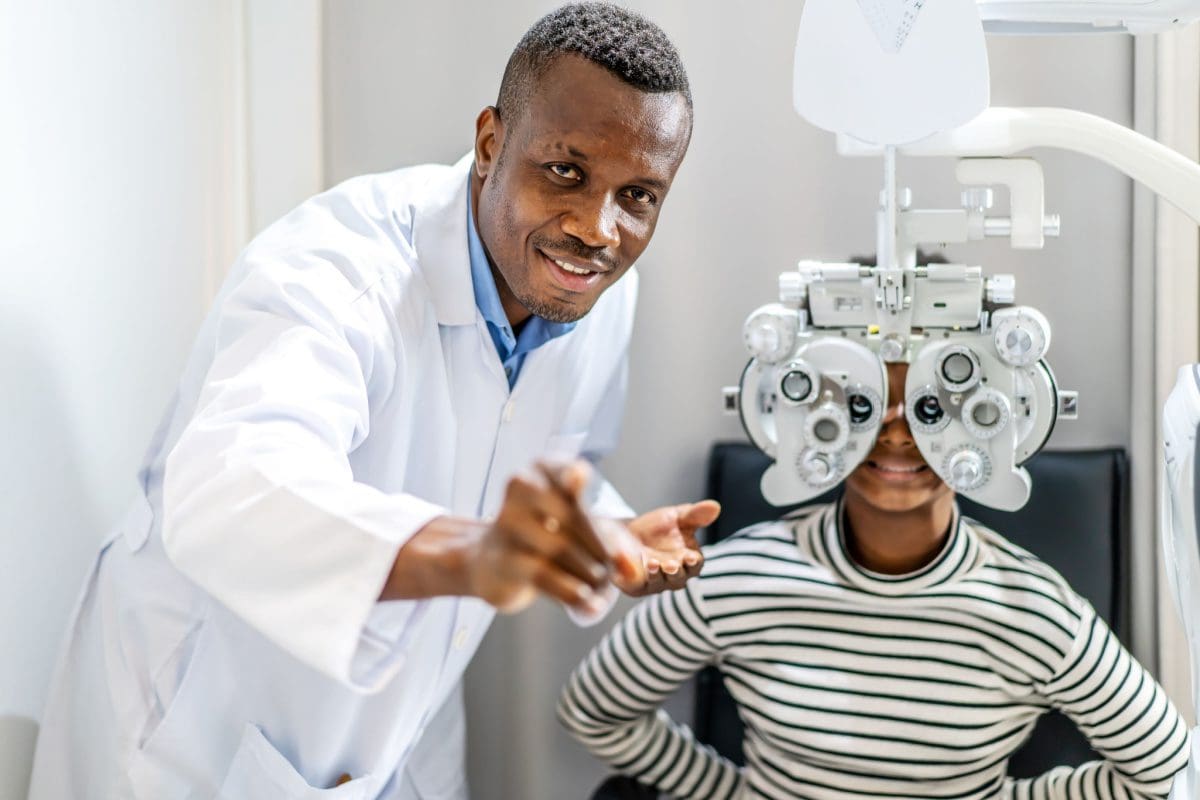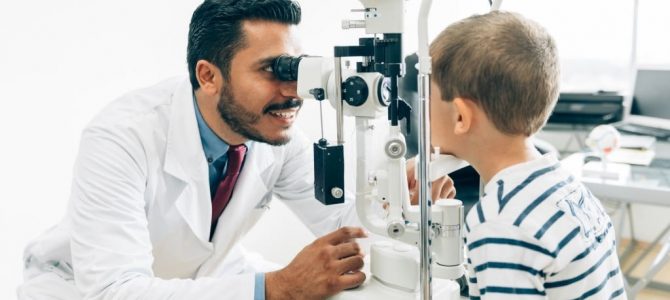Advanced Refractive Surgeries in AL: Discover Alternatives at Our Clinic
Wiki Article
Exploring the State-of-the-Art Technologies Used for Identifying and Treating Eye Problems
In the realm of ophthalmology, the advancement of modern technology has actually substantially improved the devices offered for detecting and dealing with various eye problems. From sophisticated imaging technologies that offer detailed understandings right into eye structures to robotic-assisted medical treatments that provide unmatched precision, the landscape of eye care is continuously advancing. With the combination of man-made intelligence in diagnostics, gene treatment advancements, and digital truth rehabilitation, the possibilities for enhancing person outcomes are broadening at a rapid speed. The convergence of these innovative technologies holds the pledge of revolutionizing the area of ophthalmology, offering new methods for individualized and reliable treatments.
Advanced Imaging Technologies
Advanced Imaging Technologies have reinvented the area of ophthalmology by offering in-depth and exact visualization of the eye structures. Optical Comprehensibility Tomography (OCT) attracts attention as a key innovation in this world. OCT uses light waves to record high-resolution cross-sectional pictures of the retina, permitting for the recognition of minute architectural adjustments. This non-invasive technique aids in the early detection and surveillance of different eye problems such as macular deterioration, diabetic retinopathy, and glaucoma.Furthermore, Fundus Photography is one more crucial device in sensory imaging. This method involves capturing in-depth photos of the rear of the eye, including the retina and optic disc. Fundus Digital photography helps in recording the progression of eye diseases, evaluating treatment efficiency, and informing clients concerning their eye wellness.

Robotic-Assisted Procedure
Robotic-assisted procedures have considerably progressed the capacities of sensory surgery, ushering in a brand-new period of accuracy and performance in treating numerous eye problems. By incorporating robotic modern technology right into medical procedures, eye doctors can achieve exceptional accuracy and control, causing enhanced client outcomes.Among the key benefits of robotic-assisted surgical treatment in ophthalmology is the boosted dexterity and stability it offers to specialists. The robotic arms can perform precise activities with a high degree of precision, enabling delicate treatments with marginal invasiveness. This level of accuracy is specifically valuable in surgical procedures entailing the retina, where also minor mistakes can have substantial effects for an individual's vision.
In addition, robotic-assisted surgical systems provide real-time imaging and responses to the specialist, allowing them to make enlightened choices during the procedure. This technology improves the doctor's situational awareness and permits adjustments to be made promptly, making certain optimum outcomes for the individual.
Artificial Intelligence in Diagnostics
With the advancement of cutting-edge innovations enhancing surgical accuracy in sensory treatments, the assimilation of Artificial Intelligence in diagnostics has actually become a crucial advancement reinventing the area of eye care. Synthetic Intelligence (AI) algorithms are being significantly made use of to evaluate complex information from imaging technologies like optical coherence tomography (OCT) and fundus photography to aid in the very early detection and accurate diagnosis of numerous eye problems. These AI systems can effectively determine patterns and anomalies in images that may not be noticeable to the human eye, making it possible for quicker medical diagnosis and therapy planning.AI algorithms can also predict disease development, recommend individualized therapy plans, and analyze the performance of interventions. By improving the diagnostic process, AI not only enhances the efficiency of eye treatment experts but additionally improves person results by allowing timely interventions. As AI proceeds to breakthrough, its duty advice in diagnostics is anticipated to expand, offering brand-new opportunities for early intervention and personalized therapy in the field of ophthalmology.
Gene Therapy Developments
In the realm of ophthalmic advancements, current strides in genetics therapy technologies have sparked substantial rate of interest among researchers and medical care professionals alike. Gene therapy holds enormous promise in reinventing the therapy of different eye conditions by targeting the hidden genetic causes. By presenting hereditary material see here now into cells to make up for uncommon genetics or to supply an absent gene, genetics treatment supplies a tailored strategy to resolving inherited eye problems such as retinitis pigmentosa, Leber hereditary amaurosis, and others that were formerly considered untreatable.
As study in genetics treatment continues to advancement, the potential for customized treatments for a larger series of eye problems grows, supplying brand-new wish for people with genetic eye conditions.
Digital Truth Rehabilitation
Digital reality rehab has actually arised as an advanced strategy in enhancing the recuperation and rehabilitation processes for people with various aesthetic disabilities. cataract care service. By simulating real-world settings with immersive innovation, virtual reality supplies a special system for vision treatment and rehabilitation. This innovative technique enables individuals to take part in interactive exercises and activities made to boost aesthetic skill, depth assumption, eye control, and total visual functioningOne key advantage of virtual fact recovery is its capacity to personalize treatment programs based upon the details requirements and capabilities of each client. Through real-time responses and monitoring, medical care professionals can track progression, readjust interventions, and offer individualized treatment to optimize results. Furthermore, digital truth technology can develop a controlled and safe space for people to exercise aesthetic tasks, get rid of challenges, and build confidence in an online setup before transitioning to real-world circumstances.
Conclusion
To conclude, the innovations in imaging technologies, robotic-assisted surgeries, synthetic knowledge diagnostics, genetics therapy innovations, and digital fact recovery have substantially boosted the medical diagnosis and treatment of eye problems. cataract care service. These advanced technologies have actually changed the field of ophthalmology, enabling even more effective and exact treatments. As innovation proceeds to advance, the future of eye care looks promising with the potential for a lot more ingenious solutions to enhance person end resultsIn the world review of ophthalmology, the evolution of technology has substantially boosted the devices available for detecting and treating various eye problems. Fundus Digital photography assists in recording the progression of eye conditions, evaluating therapy efficacy, and informing patients regarding their eye health.
Man-made Knowledge (AI) formulas are being progressively utilized to analyze complicated data from imaging innovations like optical coherence tomography (OCT) and fundus photography to aid in the very early discovery and accurate medical diagnosis of different eye conditions.In conclusion, the innovations in imaging technologies, robotic-assisted surgical treatments, artificial intelligence diagnostics, gene treatment technologies, and online reality rehabilitation have actually dramatically boosted the diagnosis and treatment of eye problems. As modern technology proceeds to develop, the future of eye treatment looks encouraging with the possibility for even more innovative services to enhance person outcomes.
Report this wiki page